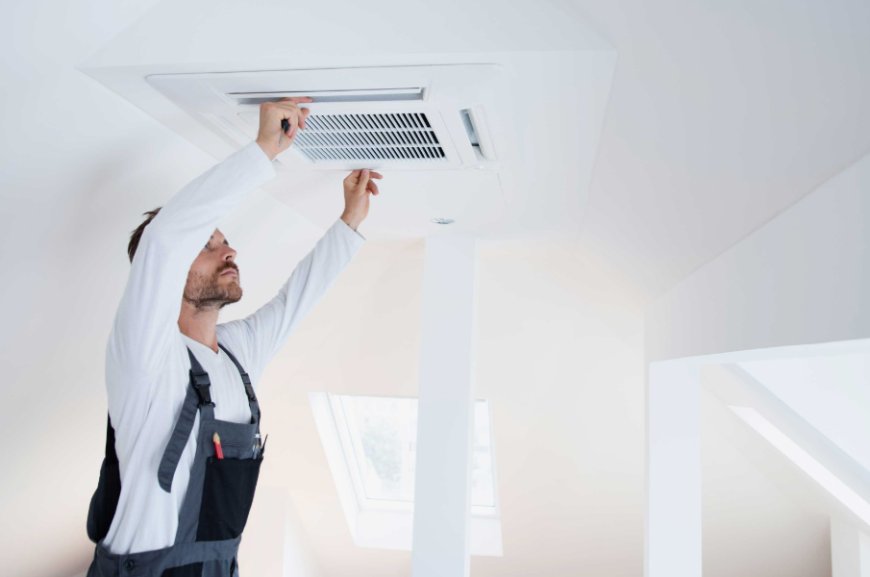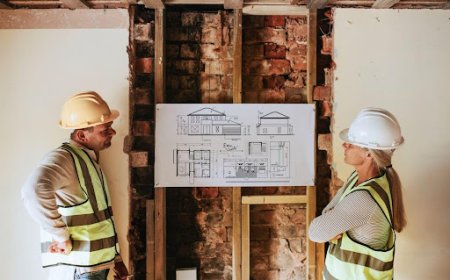The Complete Guide to Home and Commercial Ventilation Service
From homes to offices, this guide explains everything about ventilation service, including system types, costs, and maintenance tips.

When we think about indoor comfort, heating and cooling often come to mind first. But did you know that poor air circulation can cause major health issues and discomforteven if your AC is running fine? Thats where ventilation service becomes critical. A good ventilation system does more than move airit removes stale air, balances humidity, filters out pollutants, and brings in fresh air. In this blog, well explore the value of professional ventilation service, what it involves, how it helps your space, and when you should get it done.
What Does Ventilation Service Include?
A professional ventilation service typically covers a full inspection and tune-up of your air circulation system. Technicians check for clogs, dirty ducts, poor airflow, malfunctioning fans, or outdated filters.
In many cases, the service may include:
-
Cleaning return and supply vents
-
Replacing or cleaning filters
-
Checking humidity control systems
-
Balancing airflow between rooms
-
Repairing fans or ductwork issues
This helps ensure that air flows evenly, keeps indoor air clean, and supports a comfortable living or working environment.
Types of Ventilation Systems You Might Have
Ventilation isnt one-size-fits-all. Here are the main types found in homes and businesses:
-
Natural Ventilation: Uses windows, vents, and cracks to allow air to pass freely. Its common in older buildings.
-
Mechanical Ventilation: Includes fans, ducts, and exhaust systems powered by electricity. These systems often pair with HVAC units.
-
Heat Recovery Ventilation (HRV): Brings in fresh air while recovering heat from outgoing air, improving efficiency.
-
Energy Recovery Ventilation (ERV): Similar to HRV but also balances humidity along with temperature.
Knowing your system type helps you understand the kind of ventilation service you need and how to improve your air flow.
Signs That You Might Need Ventilation Service
Not sure if you need help with your system? Watch out for these common warning signs:
-
Your home feels stuffy even with windows closed
-
Excess dust on furniture or near vents
-
Lingering smells from cooking, pets, or smoke
-
High humidity levels or mold spots
-
Uneven temperatures in different rooms
-
More frequent allergy or asthma symptoms indoors
If any of these apply, its time to schedule a ventilation service to get your system back on track.
Health Benefits of a Well-Ventilated Space
Poor air circulation allows pollutants, moisture, and allergens to build up indoors. A good ventilation system helps reduce:
-
Dust and allergens that irritate the lungs
-
Mold growth from excess moisture
-
Carbon dioxide buildup, which can make you tired or dizzy
-
Harmful VOCs (volatile organic compounds) from paints, furniture, or cleaning products
A reliable ventilation service ensures your system filters out harmful substances and replaces stale air with cleaner, fresher airhelping everyone in your space breathe easier.
Ventilation Service vs. Air Duct Cleaning: What's the Difference?
Many people confuse these two, but they serve different purposes.
-
Air Duct Cleaning focuses on removing dust and debris from ducts.
-
Ventilation Service involves checking airflow, mechanical parts, humidity levels, and overall system performance.
While duct cleaning may be part of a larger service, it doesnt address all the performance issues or air quality concerns. Thats why a full ventilation service is more comprehensive.
Cost of Ventilation Service: What to Expect
Costs vary depending on your systems size and condition, but heres a general idea:
-
Basic Home Inspection & Filter Replacement: $100$200
-
Full System Cleaning & Repairs: $300$600
-
Commercial Systems or Add-Ons (like HRV checks): $600+
Considering the impact on your comfort, energy efficiency, and health, regular service is a smart investment. Ask your technician for a breakdown before the job starts.
FAQs
Q1: How often should I get ventilation service?
Most homes should schedule a full service once a year. If you live in a high-pollution area or have pets, twice a year may be better.
Q2: Can poor ventilation increase allergies?
Yes. Without proper airflow, allergens like dust, dander, and mold spores build up indoors, making allergy symptoms worse.
Q3: Does ventilation help with moisture and mold?
Absolutely. A properly functioning ventilation system helps remove excess moisture that can lead to mold growth.
Q4: What areas of the home are most affected by poor ventilation?
Bathrooms, kitchens, and basements typically suffer most due to humidity and limited air flow.
Q5: Is ventilation only important in summer?
No. It matters all yearespecially in winter when homes are sealed up and fresh air isnt coming in naturally.
Conclusion: Clean Air Starts with Good Ventilation
Your HVAC system cant do it all alone. Without proper airflow, your indoor environment can become stale, unhealthy, and uncomfortable. Thats why ventilation service is so importantnot just once, but regularly. It supports your health, improves energy efficiency, and prevents long-term damage from mold or humidity. Whether you're experiencing air quality issues or just want peace of mind, investing in a professional ventilation checkup is always a smart move.







































